Announced in September 2015, the $1117 Carl Zeiss Milvus 2/35mm ZF.2 Nikon (Milvus 35mm f/2) is an FX-mount Nikon lens designed specifically for full-frame Nikon DSLRs such as the D800E. The fast f/2 maximum aperture makes it a versatile prime lens for much low-light photography. The 35mm focal length facilitates a field of view akin to human vision (excluding peripheral vision), which makes it a nice focal length for capturing scenes with natural perspectives, and it’s a popular choice for photographers shooting events such as weddings or for environmental portraiture, as well as for interior and architectural photography (if you can get back far enough).
The Milvus 35mm f/2’s aperture range runs between f/2 and f/22, with a minimum focus distance of 30cm. Optical construction utilizes 9 elements in 7 groups; the lens measures 81mm in length, weighs 649g, and has a 58mm screw thread for attaching filters. As mentioned, there’s no auto focus or image stabilization, but the Milvus range electronically couples with your DSLR to record lens data to the EXIF file. The Milvus 35mm f/2 is also compatible with Nikon APS-C-sensor DSLRs such as the D500, where it offers an equivalent 52mm focal length, which is still useful for most general use photography.
Highlights
- Excellent uniform sharpness
- Minimal distortion
- All-metal dust and splash proof construction
Potential drawbacks
- Manual focus only
- No image stabilization
- Heavy
Overall image quality
Excellent low-light performance, with an overall DxOMark score of 40 points tested on the Nikon D800E, puts the Milvus 35mm f/2 just inside the top 20 for all prime lenses we’ve tested on the D800E, and in third place for 35mm primes (behind the Sigma 35mm f/1.4 A and the Tamron 35mm f/1.8 Di VC USD).
Its sharpness score of 29 P-Mpix is outstanding, maximizing a lot of the D800E’s 36Mp resolution, and the Milvus 35mm f/2 offers uniform sharpness across the frame at all aperture settings. It’s very good at the maximum f/2 aperture, too, where it offers around 70% acutance in the field, hits peaks sharpness around 80% acutance at f/2.8, and somewhere in the middle between f/4 and f/11.
There’s a little barrel curvature of 0.4%, which isn’t surprising for a slightly wide-angle lens, but it’s well-controlled and doesn’t require much post-production correction. Some vignetting of –1.7 EV at f/2 and –1EV at f/2.8 is evident, and although not completely clean between f/4 and f/22, it’s significantly better, with only around 0.33 EV shading in the far corners. It’s a similar story for chromatic aberration, with some noticeable fringing in the far corners at f/2 and f/2.8, and some mild chromatic aberration in the outer field between f/4 and f/22.
Image quality compared
Head-to-head against the $1843 Carl Zeiss Distagon T 35mm f/1.4 and the now-discontinued Carl Zeiss Distagon T 35mm f/2 ZF.2, the newer Milvus 35mm f/2 comes out top for low-light performance and sharpness when tested on the D800E. Lens metrics for distortion, vignetting, and chromatic aberration are broadly similar, although the Distagon T 35mm f/2 offers an improvement on fringing. The Milvus is just that bit sharper, though, with higher levels of resolution and slightly more uniform results at f/2 compared to its sister models. All three lenses are phenomenally sharp between f/2.8 and f/11, and although the more expensive Distagon T 35mm f/1.4 is exceptional between f/5.6 and f/11, with over 80% acutance in the field, the Milvus is a little more consistent across all aperture settings, resulting in the higher overall sharpness score.
The Milvus 35mm f/2 also comes out on top compared to the Nikon own-brand 35mm prime options, including the $1697 Nikon AF-S 35mm f/1.4G and the $527 Nikon AF-S 35mm f/1.8G. Despite the slower f/2 maximum aperture, the Milvus lens actually comes out just on top for low-light performance as well, with an overall DxOMark score of 40 points compared to 36 for the Nikon equivalents.
It’s just ahead for sharpness, too, with slightly higher overall acutance and improved edge resolution at f/2. Resolution for the Milvus and the Nikon 35mm f/1.8G between f/2.8 and f/11 is very comparable, but the Milvus clearly has the edge over the Nikon 35mm f/1.4G version, which although still good, is slightly softer overall and notably so in the corners.
Lens metrics for distortion and vignetting are pretty comparable among the three, but the Milvus lens also has the edge for chromatic aberration. While noticeable fringing at f/2 on the Milvus is restricted to the far corners, on both Nikon lenses, specifically the 35mm f/1.4G, the effect is more evident in the outer field, which will have a bigger detrimental impact on your images. Although any noticeable fringing improves as you close down the aperture on the Nikon lenses, the same trend continues up to f/8, where the effect is better controlled on the Milvus. At f/11, chromatic aberration is broadly similar for all three.
Against the new breed of cheaper high-performance alternatives such as the $899 Sigma 35mm f/1.4 A and the $599 Tamron SP 35mm f/1.8 Di VC USD, which the Milvus range has in its sights, performance is remarkably close. With slightly improved light transmission, the Sigma and Tamron alternatives rank just ahead overall for low-light performance, but the scores are close.
The same is true for sharpness, with very comparable results at f/2 and f/2.8. It’s fair to say, however, that both the Tamron and Sigma alternatives hit higher levels of peak sharpness — around 80% acutance — between f/4 and f/8, and although the Milvus remains very good, resolution is a little lower at around 70% at these settings.
Headline vignetting scores at the maximum aperture are broadly the same, but the Sigma and Tamron offer slightly less corner shading at f/2 and f/2.8 compared to the Milvus. The Sigma is also completely clean from f/4, but the Tamron and Milvus continue to display a tiny bit of vignetting at all apertures.
Chromatic aberration is also slightly better controlled on the Tamron and Sigma equivalents, and although as discussed it’s not overly problematic on the Milvus, there’s virtually no noticeable fringing on its cheaper competitors.
Specifications
- Nikon F FX mount
- Constant f/2 maximum aperture
- Lens made of special glass with anomalous partial dispersion
- T*® antireflective coating
- 9 elements arranged in 7 groups
- 0.3m minimum focus
- “Floating Elements” design
Conclusion
With an irreproachable reputation for quality, Carl Zeiss lenses have long been the desire of many a photographer. Historically and unfortunately, they’ve often been out of financial reach of many of us, but the new Milvus range looks to address that with some competitively-priced models to challenge the high-performance optics from both own-brand and third-party manufacturers.
Featuring an all-metal construction, manual focus, and Zeiss precision engineering, the Milvus 35mm f/2 is the type of lens that should last a photographer a lifetime. Performance is outstanding, with excellent low-light results, consistently good edge-to-edge sharpness at all apertures, and minimal distortion. All that helps the Milvus 35mm f/2 rank above the more expensive Nikon 35mm f/1.4G and Zeiss Distagon T 35mm f/1.4 lenses, making it a good value option if you can live with the one stop slower f/2 maximum aperture. It’s pretty much neck and neck with the cheaper Tamron SP and Sigma Art alternatives, however, both of which are giving Zeiss a run for its money in the modern market. These third-party equivalents come with extra features, too, such as autofocus and image stabilization (in the case of the Tamron). If you want some first-class German engineering to attach on the front of your Nikon DSLR, though, the Carl Zeiss Milvus 35mm f/2 is a beautiful lens and delivers top results.
Also consider
For greater insight into the performance of alternatives to the Carl Zeiss Milvus 35mm f/2, please see our Nikon D750 and Nikon D800E best lenses reviews,
as well as the Tamron SP 35mm f/1.8 Di and Nikon 35mm f/1.8G individual lens reviews.


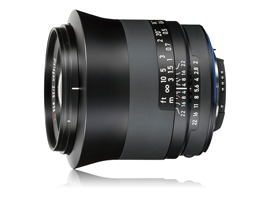


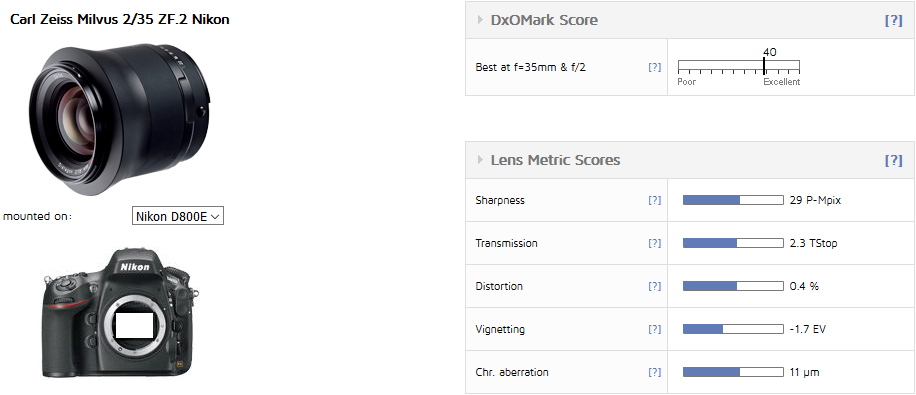

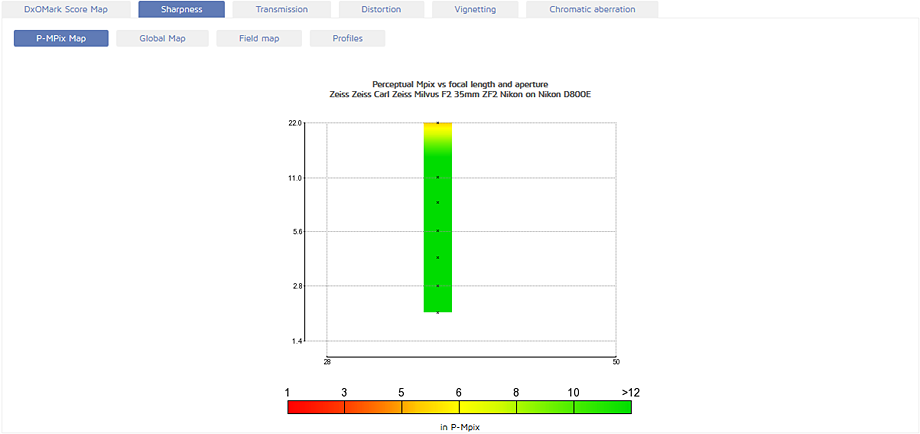
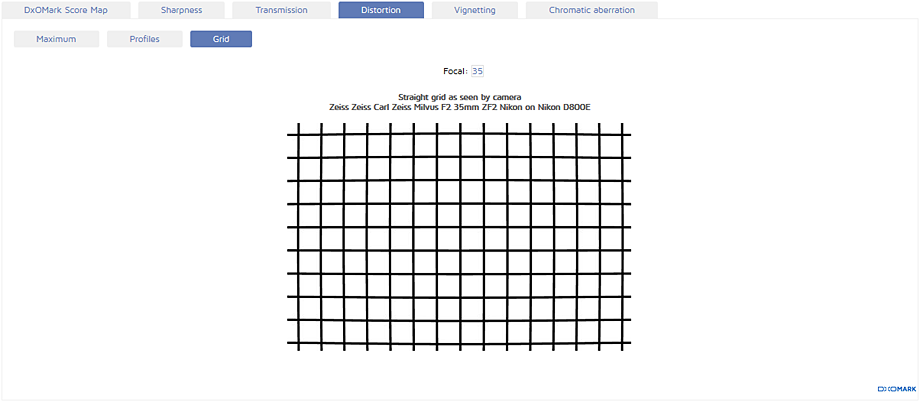
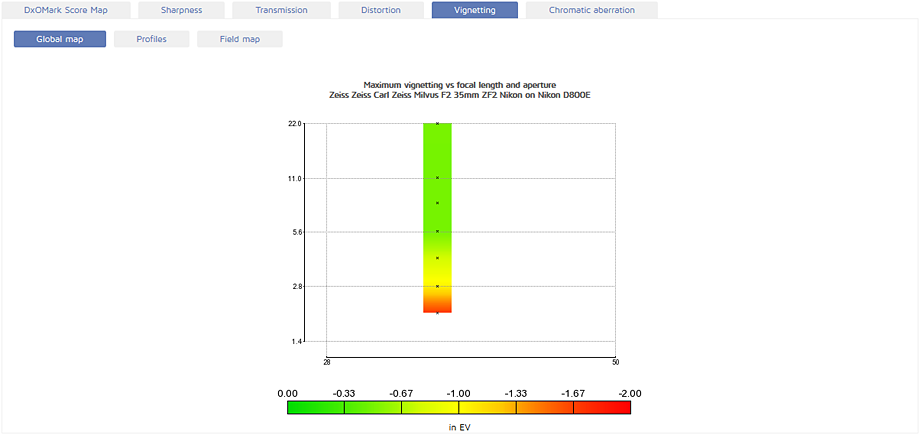
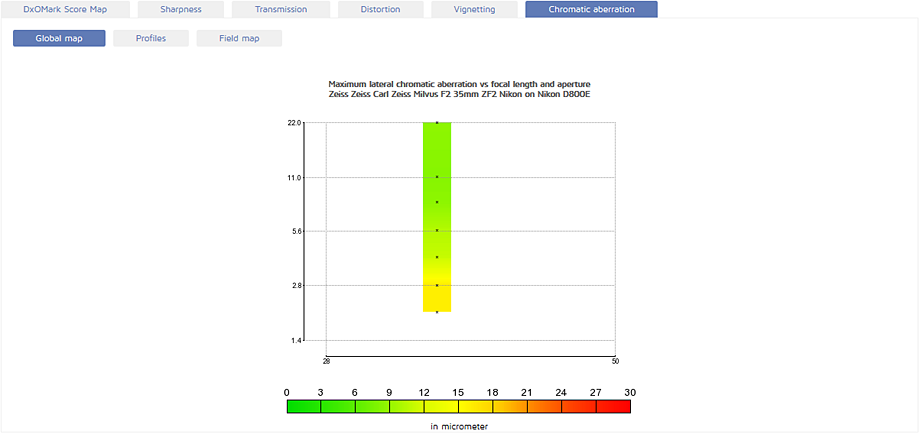
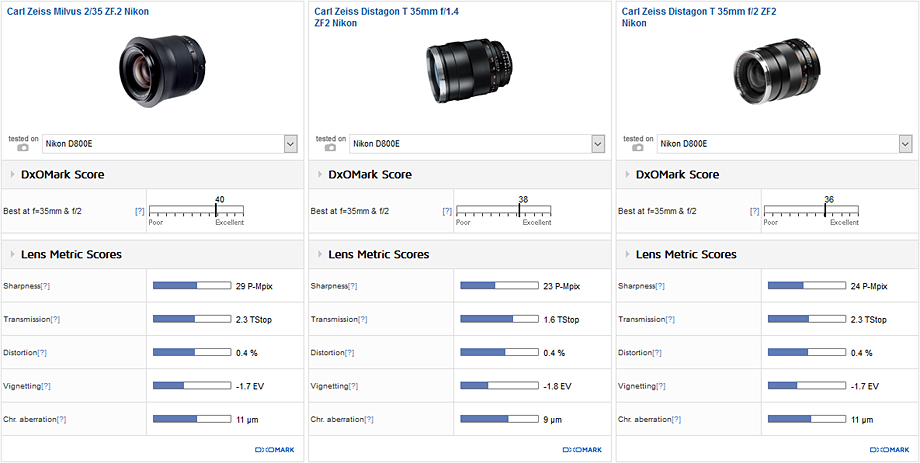
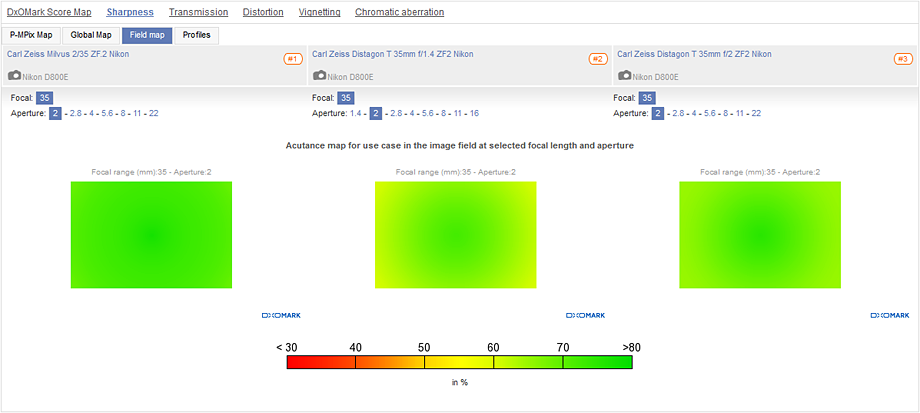
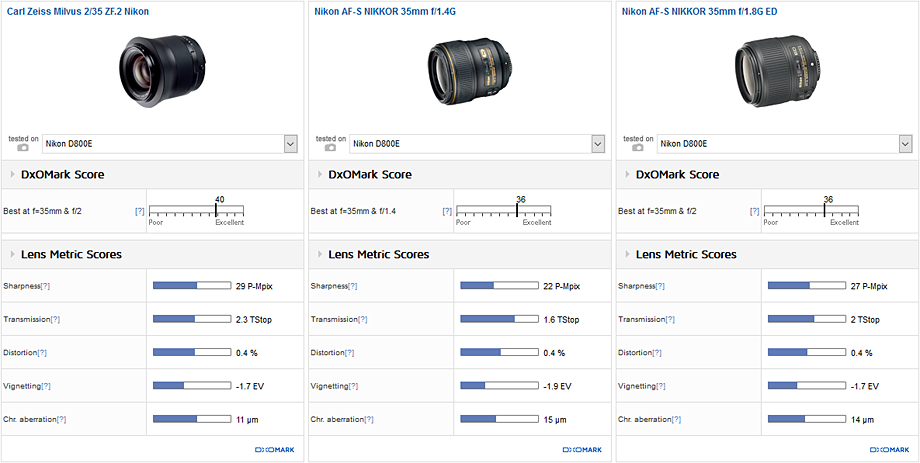
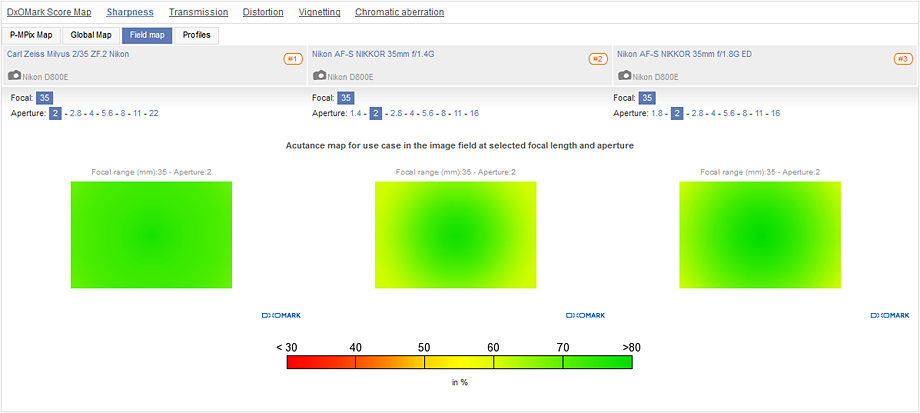
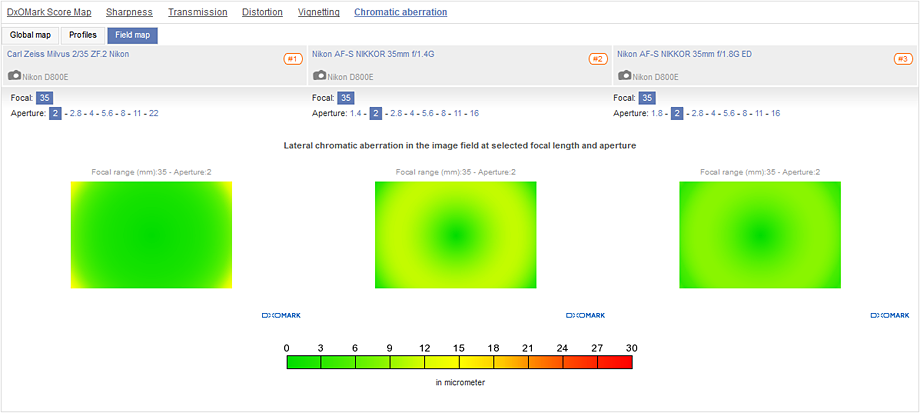
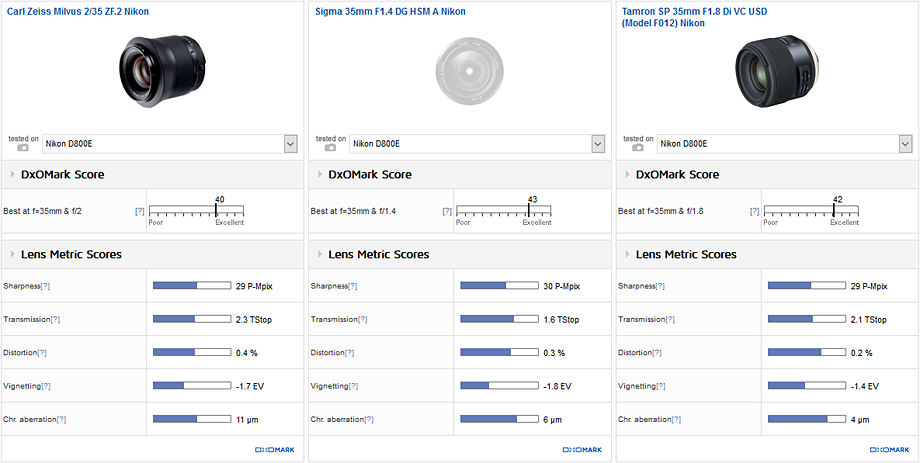
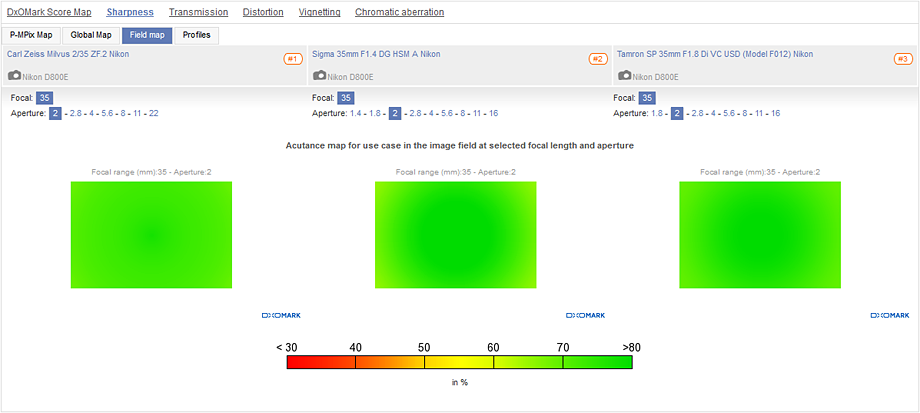
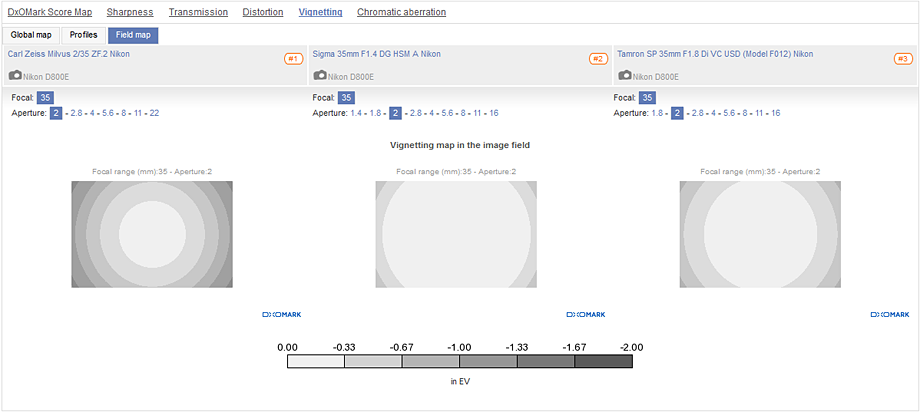
DXOMARK encourages its readers to share comments on the articles. To read or post comments, Disqus cookies are required. Change your Cookies Preferences and read more about our Comment Policy.